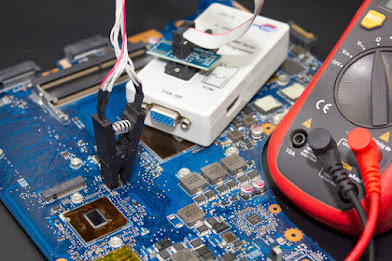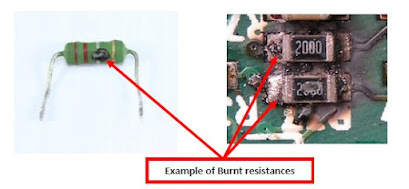🖥️ How to Install Windows Service Packs Using CMD (Command Prompt)
Want to install a Windows Service Pack manually, silently, and professionally? Whether you're managing a personal system or updating multiple machines in an IT environment, using the Command Prompt (CMD) to install Windows Service Packs can be fast, efficient, and reliable.
In this detailed guide, you’ll learn how to install Service Packs — particularly for Windows 7 — using the command line (CMD). You’ll also find out how to silently deploy updates with switches, handle reboots, and avoid common mistakes.
📦 What Are Windows Service Packs?
A Windows Service Pack is a collection of updates, fixes, and enhancements bundled together into one file. These typically include:
- Security patches
- Performance improvements
- Bug fixes and stability updates
Microsoft released service packs primarily for Windows XP, Vista, and 7. In modern versions (Windows 10/11), these have been replaced by "feature updates" or build upgrades — but the installation principles are similar.
⚙️ Why Use CMD for Installing Service Packs?
- Allows silent/unattended installations
- Useful for batch or script deployments
- Works on machines with broken Windows Update
- No need for GUI interaction — great for remote or IT technician work
✅ Step-by-Step: Install Windows 7 SP1 via CMD
📥 Step 1: Download the Service Pack
- Visit the official Microsoft website or a trusted archive
- Download the correct architecture:
- 64-bit (x64):
windows6.1-KB976932-X64.exe - 32-bit (x86):
windows6.1-KB976932-X86.exe
- 64-bit (x64):
- Save the file to a known location, e.g.,
C:\Updates
🛠️ Step 2: Open CMD as Administrator
Search for cmd in the Start Menu > Right-click > Run as Administrator
📝 Step 3: Navigate to the Folder
cd C:\Updates
🚀 Step 4: Run the Silent Installation Command
Use the appropriate command for your architecture:
For 64-bit Windows 7:
windows6.1-KB976932-x64.exe /quiet /norestart
For 32-bit Windows 7:
windows6.1-KB976932-x86.exe /quiet /norestart
Explanation of switches:
/quiet– runs the installer silently with no prompts/norestart– prevents automatic reboot after install
C:\Windows\Logs\CBS.
🔁 Step 5: Manually Reboot the PC
shutdown -r -t 0
This command restarts the PC immediately. You can also set a delay (in seconds) by changing the value after -t.
🗂️ Alternative: Install .MSU Update Files via CMD
Some updates or mini-service packs come as .msu files (Microsoft Update Standalone Installer).
💻 Command to Use:
wusa.exe "C:\Updates\KBXXXXXXX.msu" /quiet /norestart
Replace KBXXXXXXX with the correct file name.
After installation, reboot as shown earlier:
shutdown -r -t 0
💡 Best Practices for CMD-Based Installations
- Always run CMD as Admin
- Close all other programs before running the update
- Ensure enough disk space (SP1 requires at least 5–10 GB free)
- Temporarily disable antivirus (some block silent installers)
- Keep a backup or restore point before installation
🧪 How to Confirm SP1 Is Installed
After rebooting:
- Right-click
Computer>Properties - Look under "Windows edition" — it should say “Service Pack 1”
Alternatively, run this in CMD:
systeminfo | findstr /i "Service Pack"
If installed, you’ll see output like:
Service Pack 1
🔄 Can You Uninstall a Service Pack?
Yes — if installed via .exe and the uninstall option was enabled.
🧹 Uninstall Using CMD:
wusa.exe /uninstall /kb:976932 /quiet /norestart
Then reboot:
shutdown -r -t 0
🧠 Troubleshooting Common CMD Installation Issues
- Error 0x800f0826: Reboot required — use
shutdown -r -t 0 - “Access Denied”: Make sure you’re running CMD as Administrator
- File not recognized: Check for typos in file name and path
- Installer doesn’t launch: Check if your file is corrupted or wrong architecture
🔐 Bonus: Automating Service Pack Install via Script
You can create a .bat file to install SP1 on multiple machines:
@echo off cd C:\Updates windows6.1-KB976932-x64.exe /quiet /norestart shutdown -r -t 0
Save this file as installSP1.bat and run it as Admin.
🧰 Where to Download SP1 Securely
Official links (still available via Microsoft Update Catalog):
- KB976932 (Windows 7 SP1)
- Make sure to download the correct version (x86 or x64)
🧭 Final Thoughts – A Technician’s Tool for Speed & Control
Installing Windows Service Packs via CMD is a professional, clean, and scriptable method that every IT technician should master. Whether you're maintaining a lab of older PCs or troubleshooting update failures, this approach puts you in full control.
With just a few lines in Command Prompt, you can silently upgrade systems, automate workflows, and streamline your repair process — no clicks, no pop-ups, no wasted time.
Need help with CMD scripts, batch tools, or OS deployment? Reach out to Bigtoyo Computer Technology Ltd. — your go-to expert for IT solutions, repair, and technician training.
Written by Bigtoyo Computer Technology Ltd. – Empowering tech minds with real-world IT repair skills and automation tools across Nigeria and beyond.






Comments
Post a Comment